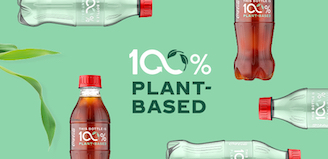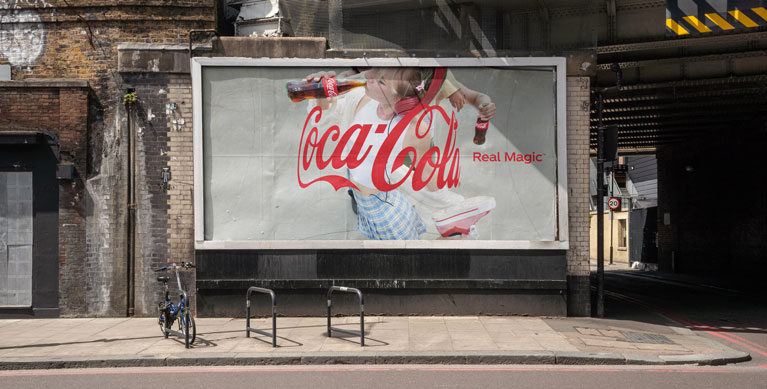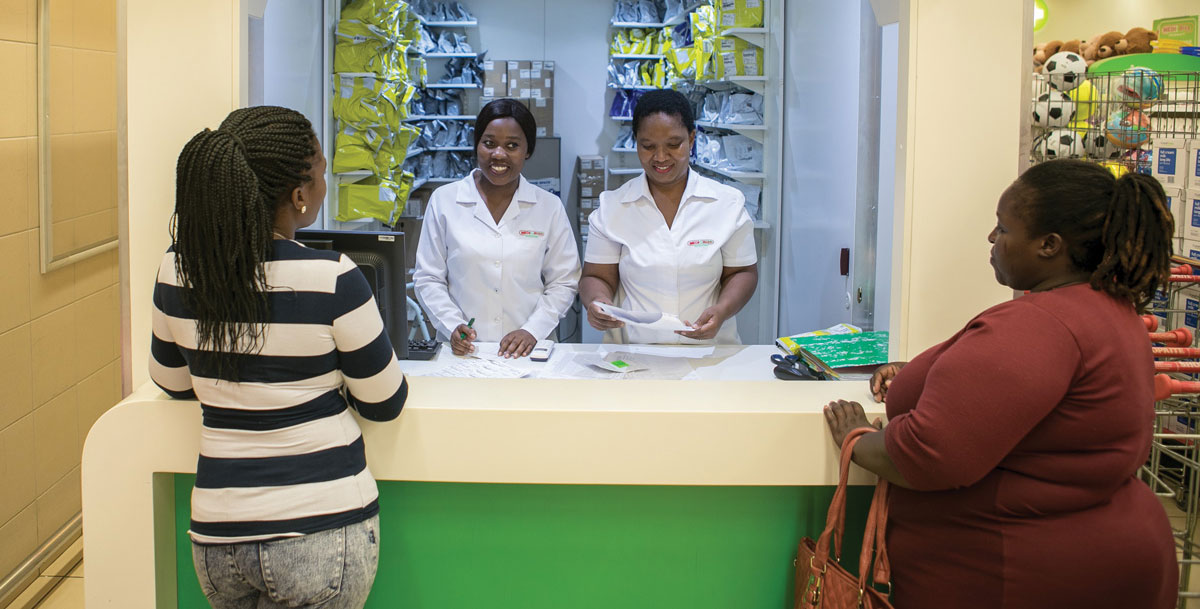
Dispensing Refreshment: These Innovations Have Helped Spread the Enjoyment of Coca‑Cola Through the Years
06-06-2017
From the syrup urns of the late 1800s to soda fountains in space, Coca‑Cola has continuously revolutionized the art of refreshing the world, one drink at a time.
Critical to achieving this mission are the vessels in which the products are delivered.
In this photo gallery, go on a visual journey through history, exploring the ways Coca‑Cola has dispensed beverages since Dr. John Pemberton crafted the secret formula more than 130 years ago.
Syrup Urn


1896, The Wheeling Pottery Company. Wheeling, West Virginia
Beginning in 1896, the syrup urn was part of a premium program for dealers who bought more than 50 gallons of Coca‑Cola syrup per year. President Asa Candler created the promotion to incentivize organizations that served the beverage and to market the brand. The urns were made of porcelain, a porous material that absorbed the coloring from the syrup over time so the fountains turned from white to brown after much use.
Bottle Chronology


1899 – Present, Various Companies
Large-scale bottling was made possible in 1899, when Ben Thomas and Joseph B. Whitehead of Chattanooga, Tennessee, secured the exclusive rights to bottle and sell Coca‑Cola, practically throughout the United States.
With contract in hand, they joined another Chattanooga bottler, John T. Lupton and began to develop what is today the global Coca‑Cola bottling system. The patent for Coca‑Cola’s iconic contour bottle was filed by Alexander Samuelson of the CJ Root Glass Company in November 1915.
Six Pack Carrier

1923, Empire Printing & Box Company, Atlanta
With the convenience of drinking Coca‑Cola on the go well established thanks to the bottle and increasing refrigeration at home, by 1923 consumers needed an easier way to transport quantities of product. The Coca‑Cola Company and its bottlers saw the demand for the at-home-market and introduced the very first six-pack carrier to ease the consumer’s transport experience. The simple cardboard carton, described as “a home package with a handle of invitation,” became one of the industry’s most powerful merchandising tools and was patented in 1924. The cartons were provided by the bottlers at the customer locations and were expected to be re-used up to three times. Adoption of the carton came slowly until the company made a big push to promote the concept. Competitors, and later the beer industry, began to embrace the packaging in the late 1930s.
The Standardized Cooler

Early 1930’s, Glascock Brothers Manufacturing Company, Muncie, Indiana
The idea of the standardized cooler had been around since the beginning of bottling. For early coolers, bottlers would cut syrup barrels in half and attach legs. Coca‑Cola President Robert Woodruff saw the need to evolve the concept and created a technical department for both quality control and invention. He charged the group to develop an efficient, economical cooler that would be branded for Coca‑Cola and could be sold or rented to retailers. The final result was the Glascock Cooler. Deployed in 1929, the cooler sold for the low price of $12.00. Less than 25 years after its invention, the company had placed more than 1 million in the marketplace.
Dole MASTER Dispenser

1933, The Dole Valve Company, Chicago
The Dole MASTER Dispenser was the first dispenser to provide cooling at the point of service for carbonated water and syrup and the first dispenser manufactured by the company. It was field tested at the Chicago World’s Fair. The company’s first automatic fountain dispenser, in which syrup and carbonated water were mixed as the drink was dispensed, debuted at the Century of Progress Exposition in Chicago. Soda fountain operators had mixed Coca‑Cola manually since its creation in 1886, and visitors to the fair were amazed to see the attendant pour a drink simply by pulling a handle. A fully equipped bottling plant was also installed at the fair.
Mills 47

1938, Mills Novelty Company, Chicago
By 1937, The Coca‑Cola Company concluded that coin coolers had reached a stage of development that justified their being recommended for use nationally. With official approval came plans for conducting the automatic vending phase of the bottling business. The Mills ‘47’ vending machine was introduced as the first automatic vending machine to accommodate the need in the market for at-work convenience of Coca‑Cola. According to Jeff Walters in Classic Soda Machines, this machine was the only one ever made that vended bottles crown first. The bottlers and their salespeople played a critical role in the implementation and success of these machines across workplaces, especially as the country entered World War II.
Dole DELUX Dispenser (left) and Dole Citation Dispenser (Right)

1958, Dole Valve Company, Chicago
When the Dole Citation Dispenser was released it highlighted a newly-designed Implex plastic cabinet with improved operating features. The design was based on styling rendered by the noted industrial designers, Hodgman-Bourke of New York. Also, during this year, the Dole float valve assembly was made available to provide reserve syrup capacity, in any amount, determined only by the size of the pressurized syrup tank.
1947, Dole Valve Company, Chicago
The Dole DELUXE Dispenser was designed by Raymond Loewy and introduced to the market as a result of wartime research. Loewy, founder of the field of “industrial design,” played a prominent role in changing the physical and conceptual elements of the modern world. Loewy streamlined the soda fountain, giving the dispenser a modern look and enhancing the equipment to pour more servings per gallon. The ads of the time tout the fact that the improved machine would also increase profits for the soda fountain. When the Dole Deluxe Fountain Dispenser was introduced in 1947, it was an instant classic.
Vendo 44


1956, The Vendo Company, Kansas City, Missouri
The Vendo 44 ranks as the single most highly collected of upright vending machines. More than 8,000 units were made between 1956-1959. The popularity of the machine can be traced to its compact size and the instantly recognizable color scheme of Coca‑Cola white and red. The machines were also customized with imagery to match the marketing materials in print ads, such as the Sprite Boy featured on this machine.
Picnic Cooler (right) and BreakMate (left)

1958, Progress Refrigerator Company, Louisville, Kentucky
With a capacity of up to 32 bottles, picnic coolers allowed consumers to take Coca‑Cola wherever they traveled. A shelf above the bottles made this a complete lunch cooler so that sandwiches could be kept cool and dry.
Bottles were kept cold as each cooler was made with rigid insulation and possibly three grades of metal:
No. 1 or Standard – Galvanized lining and baked enamel outside,
No. 2 – Stainless steel lining and baked enamel on the outside or,
No. 3 – Stainless steel throughout.
1988, Bosch-Siemens, Munich, Germany
Designed for offices with five to 50 employees, the BreakMate allowed small business owners an opportunity to have Coca‑Cola products made available in the office. Introduced in test markets in 1985, BreakMate was rolled out nationally by Coca‑Cola USA in 1988. The company estimated there would be 30,000 BreakMate units in operation across the United States at year-end, and planned to increase that number significantly during 1990.
Westinghouse WB 60-K6


1960, The Westinghouse Electric Corporation, Pittsburgh, Pennsylvania
In the early 1960s, The Coca‑Cola Company was changing the way it went to market. For the first time, Coca‑Cola was not the only brand that was available to bottlers. Fanta had made its appearance soon to be followed by Sprite and Tab. Vending machines had been designed to dispense the standard 6.5 oz contour bottle for years, but all of these new packaging and product changes demanded a change.
In 1960, the Westinghouse Electric Corporation introduced a vending machine that could handle multiple products, packages in either cans or bottles, and different prices. This ability made the machines an economical investment with less upgrades needed when new drinks were introduced.
The Space Dispenser


1996, Bosch-Siemens, Munich, Germany
In 1996, Coca‑Cola made its fourth trip to space aboard the Space Shuttle Endeavour through the innovative post-mix dispenser. The dispenser worked much like a “post-mix” fountain dispenser found on Earth. After first entering a code in the touch-screen computer, each astronaut pressurized a bottle and pulled the lever to dispense chilled product, then disconnected the bottle from the dispenser. For the first time, astronauts were able to drink our beverages on a voluntary basis.
A total of 90 servings were available to the six astronauts. The dispenser’s built-in computer kept track of the fluid intake of each astronaut. By developing new dispensing equipment for outer space, the Company hoped to improve conditions for the astronauts, encourage them to drink more liquids while in space, and work on technologies that could have an impact on future space missions.
Coca‑Cola Freestyle

2008 Prototype
Introduced to customers in 2008, the Coca‑Cola Freestyle dispenser is the newest innovative fountain machine. Giving consumers an exponential increase in choice and personalization, the dispenser incorporates precise advanced technology to use concentrated ingredients injected from cartridges, and mix them with water and sweetener on the spot. Dean Kamen, the man who invented the Segway and portable dialysis machines, and wheel chairs that climb steps, was a critical partner in the development of the machine and the design came from Pininfarini, the designers behind the look of the Ferrari and Maserati. Freestyle allows consumers to have limitless possibilities in flavor, calorie, and size. It also allows the business to track what costumers are mixing, when they are buying, and how much they consume to drive the selections made available and meet customer needs.


